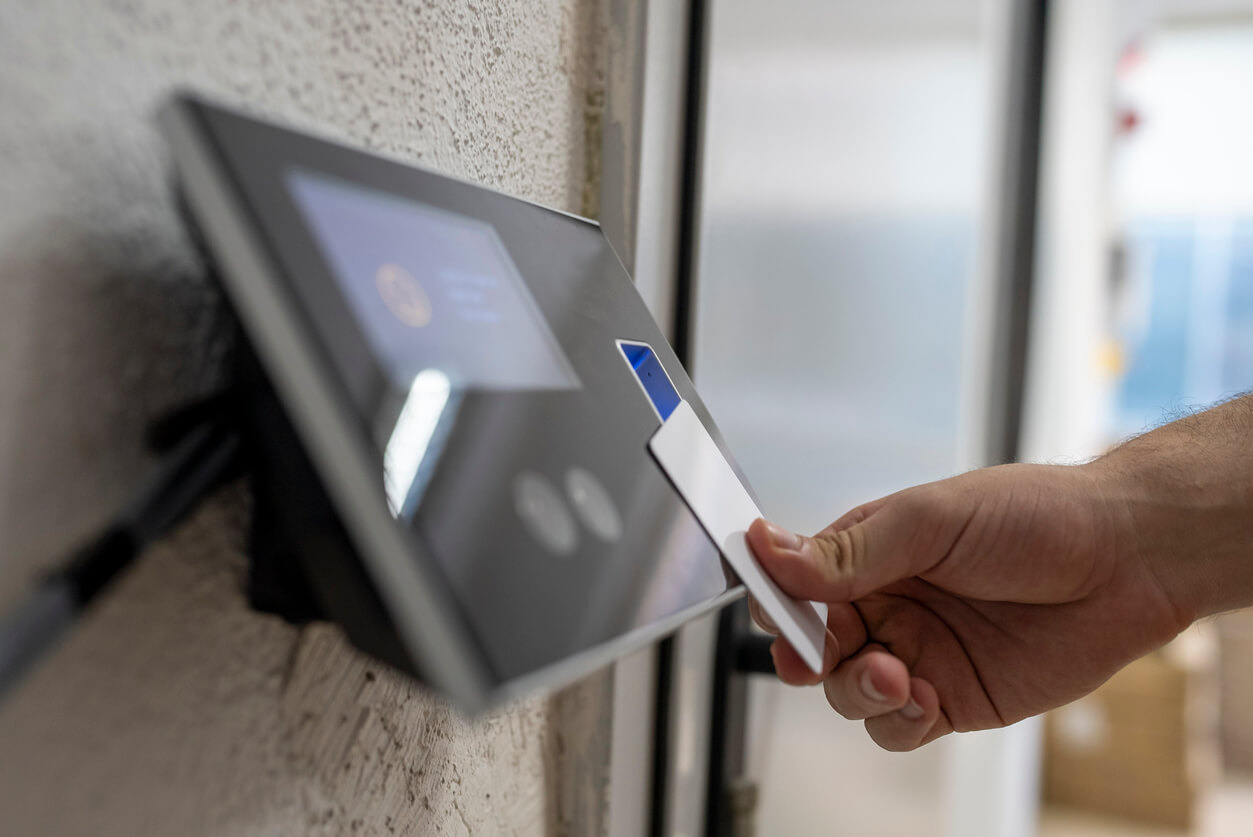
The success of a room reservation system relies on a user-centric approach that makes the experience easy and intuitive. A key component of this approach is adopting a multifaceted perspective that goes beyond pure software. IoT is an invaluable tool that complements any room reservation system, and in particular room booking panels as they provide visibility and transparency to users about room availability and occupancy at a glance. By integrating IoT technology into the workplace, such as panels, users are always up-to-date with real-time information about room availability, reducing the likelihood of ghost reservations, room camping, and occupancy mismatches.
The efficient management of room reservations is crucial for organizations aiming to optimize their workspace utilization and enhance productivity. To achieve this, a user-centric approach is essential, focusing on providing a seamless and intuitive booking experience for employees. If you’re a facility’s manager who’s finding deploying an effective space reservation system more of a challenge than they expected, this article is for you! We will explore the significance of a user-centric approach in room reservation systems and highlight the benefits of IoT integration in streamlining the booking process, setting expectations, and building user trust.
Real-time visibility: enabling informed decisions
A key advantage of IoT-integrated room booking panels is the provision of real-time information about room availability, both immediately and in the future. Users can easily identify which rooms are currently available and for how long they will remain vacant. This empowers employees to make informed decisions based on their specific resource requirements, whether they need a space for just a moment to hammer out the final details of a project plan or seek one with longer availability for a deep-level brainstorming session where a eureka moment won’t be derailed by an unexpected interruption. By having accurate and up-to-date information at their fingertips, employees can optimize their scheduling and utilize spaces more efficiently.
Improved room occupancy management: enhancing user confidence
IoT integration enables seamless coordination between room reservations and actual room usage. When a room is booked, it can be automatically monitored to ensure it becomes available at the scheduled time. Likewise, if a person is currently occupying a reserved room, they will be notified to vacate the space, ensuring that the room is ready for the next user. This synchronization between reservations and actual room occupancy sets clear expectations for users, eliminating conflicts and ensuring a smoother transition between bookings. The room booking panel acts as a visual indicator or a “traffic light” you may say, to guide users in selecting available rooms and building trust in the reservation system.
Room panels are installed outside each room to optimize workplace efficiency and etiquette
The presence of room panels promotes a professional and respectful atmosphere within the workplace. It conveys the message that room bookings are taken seriously, discouraging unauthorized usage and encouraging adherence to established protocols. By making the booking process more accessible and transparent, the panels foster a sense of accountability and consideration among employees.
Beyond avoiding uncomfortable encounters, the room panels significantly streamline the booking process. Instead of fumbling with phones and searching for booking details, individuals can quickly glance at the panel to determine if the room is available or occupied. This saves time and ensures a smoother workflow, allowing colleagues to focus on their tasks without unnecessary distractions.
User-centric approach: ensuring smooth bookings
A user-centric approach places the needs and behaviors of users at the center of the room reservation process. By understanding user requirements and preferences, organizations can design intuitive interfaces and workflows that simplify the booking experience. Employees should be able to easily locate and reserve available rooms according to their specific needs, such as room size, equipment availability, and location.
Building trust and confidence in the system
The integration of IoT technologies, such as room booking panels instills confidence in the reliability of the reservation system. Users can trust that if they reserve a room, it will be available for their use at the designated time. This reliability is vital in fostering user confidence and driving the adoption of the system. By providing accurate and real-time information about room availability and occupancy, organizations can increase user satisfaction and encourage employees to embrace the reservation system as their primary resource for securing meeting spaces.
High adoption and improved efficiency
By combining a user-centric approach with IoT integration, organizations can achieve high adoption rates and improve overall efficiency. Benchmarks can be set, and then facilities managers can eye up areas for further efficiencies, and even consider densifying their workspace to suit flexible and hybrid workforces. The real-time visibility and reliable room availability information empower employees to make well-informed decisions, reducing time wasted searching for suitable spaces. Moreover, the seamless coordination between reservations and room usage eliminates conflicts and disruptions, enabling a frictionless meeting room experience. As users witness the system consistently delivering on their reservation needs, their trust and confidence in the system grow, further driving adoption and utilization.
IoT integration: enhancing room booking efficiency
Integrating IoT technology into room booking panels brings real-time visibility to room availability and occupancy. By leveraging sensors and smart devices, organizations can collect and analyze data about room usage, enabling accurate and up-to-date information on room availability. This reduces the chances of ghost reservations (bookings that are not used) and room camping (occupying a room without a reservation). IoT integration also helps avoid occupancy mismatches, where employees arrive at a room only to find it already occupied, minimizing disruptions and enhancing the overall user experience.
Benefits of user-centric IoT room reservation deployments
- Improved efficiency: Research indicates that up to 40% of employees waste up to 30 minutes per day looking for meeting spaces. By adopting a user-centric approach with IoT integration, organizations can significantly reduce this wasted time, leading to increased productivity and improved efficiency.
- Optimal space utilization: Around 40% of dedicated desk space in offices goes unused on a given day. By implementing IoT-enabled room reservation systems, organizations can gain better insights into space utilization patterns and optimize their workspace accordingly. For instance, teams can reserve desks in “neighborhoods” to ensure they are always close to their teammates, fostering collaboration and efficient communication.
- Increased user adoption: A frictionless and user-friendly room reservation experience is crucial for encouraging employees to adopt the system. By providing real-time room availability information and simplifying the booking process, organizations can enhance user satisfaction and increase adoption rates. A user-centric approach ensures that the reservation system meets the needs of the employees, leading to higher engagement and utilization.
A user-centric approach combined with IoT integration plays a pivotal role in the success of room reservation system deployments. By focusing on the needs and behaviors of users, organizations can design intuitive interfaces and workflows that streamline the booking process. The integration of IoT technology provides real-time visibility into room availability, minimizing booking issues and occupancy mismatches. Moreover, optimal space utilization and increased user adoption are additional benefits of user-centric IoT deployments. Fully embracing these principles sets up facilities managers and their organizations up for long-term success. And the results speak for themselves: successful room reservation system deployments, maximized efficiency, and enhanced employee productivity.

